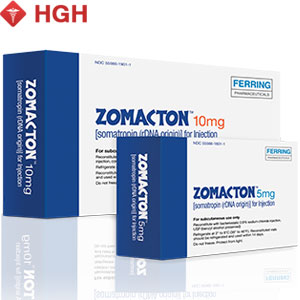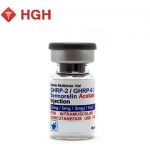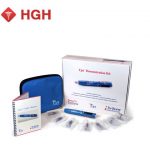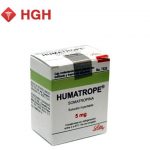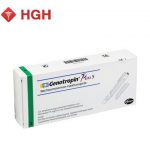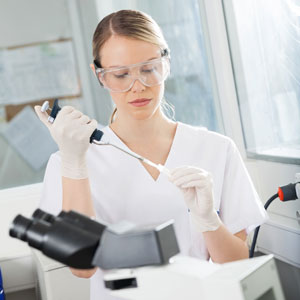
A growth hormone (GH) test is used to determine the amount of GH in your blood. GH is produced by the pituitary gland and it is required for growth. It influences the way our body uses food for energy (in metabolic processes). Growth hormone in the blood varies throughout the day and is influenced by nutrition, sleep, exercise and emotional stress.
Adenoma (a noncancerous tumor of the pituitary gland) leads to high levels of GH in adults. The result of this is the bones of the jaw, face, feet and hands grow more than in ordinary situation (acromegaly).
GH also influences the release of other substances (factors), affecting metabolic processes and growth. Among them is insulin-like growth factor 1 (IGF-1). With the high level of GH, the high level of the IGF-1 is noticed. You can do IGF-1 test for the confirmation of high growth hormone levels.
Why should you make a test
- Symptoms of adult growth hormone deficiency.
- Check if a grown-up has acromegaly, caused by adenoma.
- See what treatment with the use of GH is available.
Ways to prepare for testing
This test does not require any special preparations. You should only inform your doctor about all prescribed and non- prescribed drugs you administer. Test procedure
As GH levels in blood change fast, you may need to take several tests on different days. The first test to be done is IGF-1 levels, as they change slower.
These are the steps of the test:
- The health professional wraps an elastic band round your upper arm to prevent blood flowing. This enlarges the veins below the band and it is easier to put a needle into the vein.
- The needle site is cleaned with alcohol.
- The needle is put into the vein.
- It is possible that more than one needle stick may be required.
- A tube is attached to the needle to fill it with blood.
- The health professional will remove the band from your arm when he gathers enough blood.
- As the needle is taken away, a cotton ball or a gauze pad is put.
- Pressure is put on the injection site and then a bandage.
What you can feel
The blood is taken from the vein in your arm and then an elastic band is applied round your upper arm. It can be a bit tight. You might not feel anything from the needle, or just a quick pinch or sting.
Possible risks
Hardly any risks exist during the process of taking a blood sample from the vein.
- The appearance of a small bruise at the site is possible. If you keep pressure on the site for a couple of minutes, you can lower the chance of bruise appearance.
- Sometimes, the vein can become swollen. This problem is known as phlebitis. You should use a warm compress several times a day to treat this.
- People suffering from bleeding disorders can have ongoing bleeding. You can use warfarin (Coumadin), aspirin or some other blood-thinning drugs to avoid this. It is obligatory to inform your doctor before the test if you administer some blood-thinning drugs or suffer from bleeding and clotting problems.
Results interpretation
A growth hormone test is used to determine the amount of GH in your blood.
Normal values
The normal values offered below are considered a reference range and they are only a guide. The ranges in various labs can differ, and the lab you are doing your test might have the other normal range. The lab report provided usually includes the range applied in the lab. More than that, your doctor will explain your results taking into account your health and some other factors. We mean that if your result falls out of the normal values given here, they can still be normal for your lab’s range.
Men: Less than 5 nanograms per milliliter (ng/mL) (less than 226 picomoles per liter [pmol/L]) Women: Less than 10 ng/mL (less than 452 pmol/L)
High values
High GH values are the symptoms of gigantism or acromegaly. They can be the result of adenoma. In this case, IGF-1 levels are also high. This can also be the result of starvation, diabetes and kidney disease. In this case, IGF-1 levels are not high.
What can influence the test
There are some reasons that can prevent you from taking the test or that the results obtained are not helpful:
- Administration of such drugs as insulin, corticosteroids, estrogens or amphetamines.
- Hypoglycemia (low blood sugar).
- Obesity.
- Administering of the herb St. John’s wort.
What to consider
As the GH levels usually change throughout the day, it is necessary to take some other tests to get the final result of the test. Other tests can confirm that low levels of growth hormone (which can be normal) is the result of the disorder in the work of the pituitary gland.
- IGF-1 levels test is done simultaneously with the GH levels test. High levels of GH and IGF-1 are the evidence of acromegaly. In this situation, it is necessary to do Magnetic Resonance Imaging (MRI) to look at the pituitary gland.
- The GH suppression test (known as the glucose loading test) is used to determine the GH levels in blood before and after drinking fluid rich in glucose. Usually, the amount of growth hormone falls to less than 1 ng/mL after this fluid. If the levels of GH remain high, this is the evidence of acromegaly.
- The GH stimulation test is used to determine the GH level in blood before and after insulin or arginine is injected into the vein of the arm. If a person has a normal pituitary function, then no detectable GH is found. This test can be applied to see whether the patient lacks GH. Usually, GH levels increase after the injection. If the level of GH does not increase, this means the lack of growth hormone in the body.
